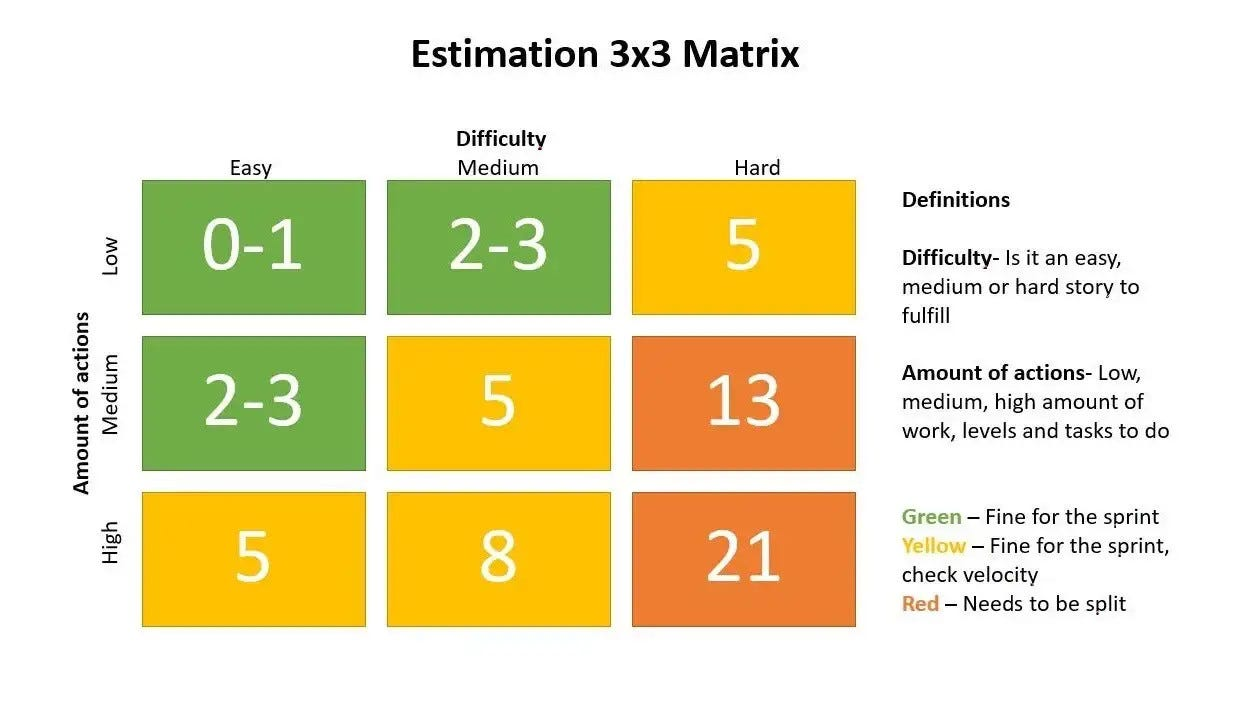Agile Scrum Estimation
What is Estimation?
Agile Scrum Estimation is the process of predicting how much effort (time, complexity, or size) a user story or task will take for the development team to complete within a sprint.
Key Points -
- Estimation is not about exact time (like 3 hours or 5 days).
- It is about relative effort – how big or difficult one task is compared to another.
- It is typically done using Story Points, T-shirt sizes, or Ideal Hours.
- The estimation is done by the team, not a manager or outsider.
Why Is Estimation Important in Scrum?
Estimation plays a critical role in planning, tracking, and delivering work in an Agile project:
- Helps with Sprint Planning: Teams need to know how much work they can commit to in a sprint (usually 2 weeks).
Estimation helps decide how many user stories can fit into a sprint.
Example: If your team’s capacity is 20 story points, and the stories in the backlog total 40 points, you’ll pick the highest-priority 20 points for this sprint. - Improves Predictability: Estimation helps forecast how much work the team can deliver in the future.
The average points completed per sprint is called velocity.
Example: If your team delivers 25 story points in Sprint 1, 22 in Sprint 2, and 24 in Sprint 3, you can roughly plan for 23-25 points per future sprint. - Encourages Team Discussion and Shared Understanding: During estimation sessions, developers, testers, and the Product Owner discuss the story together.
This helps uncover hidden tasks or technical complexity early on.
Example: A story about "email notifications" may sound simple. But during estimation, the tester raises that it must work for all email clients. The story might be re-estimated from 2 to 5 points. - Supports Prioritization: Stories that take less effort and provide more value are prioritized.
Estimation helps Product Owners balance value vs. cost.
Example: If two features have equal business value, but one takes 3 points and the other takes 8, the Product Owner might choose the smaller one to deliver value faster. - Avoids Over-Commitment: Teams often fall into the trap of taking on too much.
Estimating user stories ensures teams commit to what they can realistically complete.
Example: If the team tries to finish 40 points worth of work but usually only delivers 25, the estimation and past velocity help prevent this mistake.

Different Estimation Techniques in Agile
Agile teams use multiple estimation techniques based on their experience, team size, and project type. Below are the most commonly used ones:
- Story Points - Story Points are units of measure that represent the effort required to implement a user story. The story points follow the Fibnosi series, such as 1, 2, 3, 5, 8, 13, 21, 34, 55, etc.
- Planning Poker - Planning Poker is a consensus-based estimation technique that uses cards to assign story points to tasks. Team members use a set of numbered cards (like 1, 2, 3, 5, 8, 13, etc.) to vote on the complexity of a story.
- T-Shirt Sizing - T-Shirt Sizing assigns sizes to tasks based on their relative effort. This technique uses T-shirt sizes to estimate — XS, S, M, L, XL, XXL — to represent relative effort or complexity.
- Affinity Estimation - Affinity Mapping involves grouping similar tasks together based on their complexity or effort.
- Three-Point Estimation - Three-Point Estimation considers three scenarios: Optimistic (O) – Best-case scenario, Pessimistic (P) – Worst-case scenario, and Most Likely (M) – Realistic effort.
- Bucket System Estimation - The Bucket System involves categorizing tasks into predefined "buckets" that represent different levels of effort.
- Dot Voting - Dot Voting is a prioritization technique where team members use dots to vote on tasks they believe are most important or require more effort.
